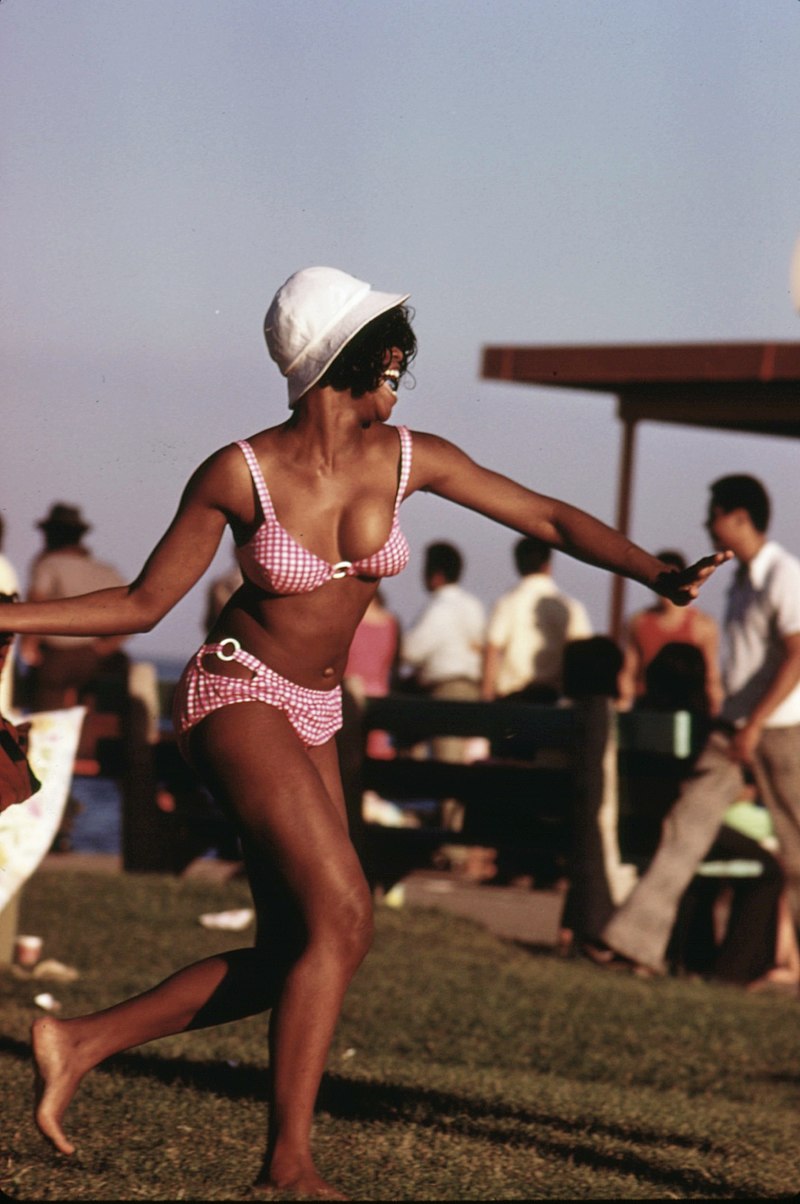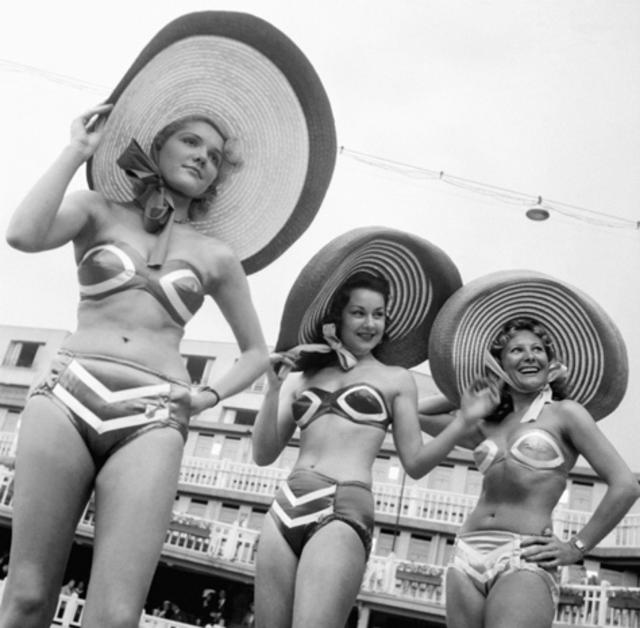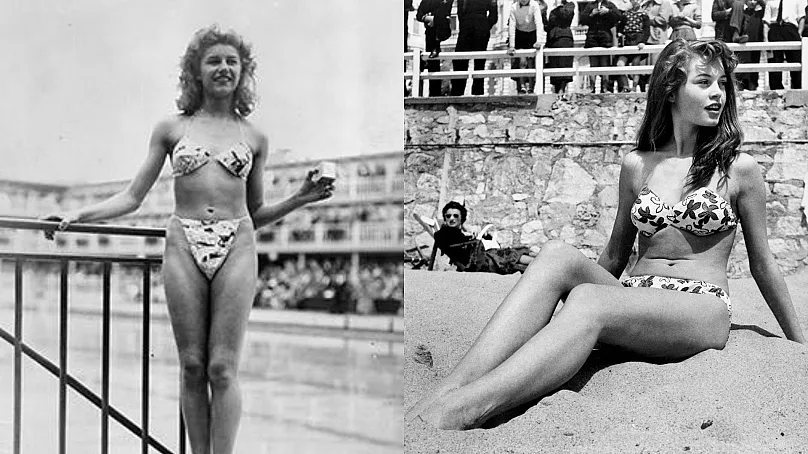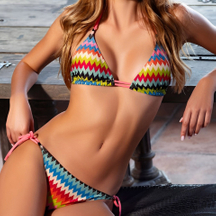Content Menu
● The Early Beginnings of Swimwear
● The 19th Century: A Shift Towards Modesty
● The Early 20th Century: The Advent of Functional Swimwear
● The Roaring Twenties: A Fashion Revolution
● World War II and Fabric Rationing
● The Birth of the Bikini
● The Bikini's Rise to Fame
● Evolution of Bikini Styles
● Cultural Significance of Bikinis
● Global Influence on Swimwear Fashion
● Conclusion
● Related Questions
>> 1. What was the first two-piece swimsuit?
>> 2. How did World War II affect swimwear design?
>> 3. Who popularized the bikini in Hollywood?
>> 4. What are some variations of modern bikinis?
>> 5. Why is July 5 celebrated as National Bikini Day?
● Citations:
The evolution of swimwear is a fascinating journey that reflects changing social norms, cultural attitudes, and fashion trends. The two-piece swimsuit, commonly known as the bikini, has a rich history that dates back centuries. This article explores the origins, development, and societal implications of two-piece swimwear, culminating in the popularization of the bikini in the mid-20th century.

The Early Beginnings of Swimwear
Before delving into two-piece swimwear, it's essential to understand the context of swimwear in general.
- Ancient Civilizations: Evidence suggests that women wore garments resembling bikinis as far back as the Copper Age, around 5600 BC. The Chalcolithic mother-goddess of Çatalhöyük, in modern-day Anatolia, was depicted wearing a similar costume.
- Classical Antiquity: In ancient Greece and Rome, women were depicted wearing something akin to the bikini during athletic events. However, Christian attitudes towards modesty led to a significant decline in such attire during the Middle Ages.

The 19th Century: A Shift Towards Modesty
By the 1800s, sea bathing became a fashionable pastime among the upper classes. However, modesty was still paramount:
- Victorian Swimwear: Women's bathing suits consisted of heavy woolen garments that covered most of the body. These suits typically included a long gown over ankle-length trousers. To maintain modesty, women often used bathing machines to enter the water discreetly.
The Early 20th Century: The Advent of Functional Swimwear
The early 1900s marked a turning point for swimwear:
- Annette Kellermann: An Australian swimmer who designed a more form-fitting one-piece swimsuit around 1910. Her daring style challenged societal norms and paved the way for more practical swimwear designs.
- Olympic Influence: With women's swimming introduced at the Olympics in 1912, there was an increased demand for functional swimsuits. This led to styles that featured sleeveless tunics over shorts.
The Roaring Twenties: A Fashion Revolution
The 1920s saw significant changes in women's fashion:
- Jantzen and the Modern Swimsuit: The Portland swimwear company Jantzen popularized the term "swimming suit," moving away from "bathing suit." Their designs featured shorter shorts and more form-fitting materials like ribbed Jersey.
- Swimsuit Policing: Despite these advancements, women faced scrutiny regarding their swimsuit choices. Some beaches employed "swimsuit police" to enforce modesty standards.
World War II and Fabric Rationing
During World War II, fabric rationing led to innovative designs:
- Reduced Fabric Use: U.S. government regulations limited fabric usage in clothing, including swimsuits. Designers began creating two-piece suits to comply with these restrictions.
The Birth of the Bikini
The bikini's official debut occurred in 1946:
- Louis Réard's Design: French designer Louis Réard introduced his groundbreaking two-piece swimsuit on July 5, 1946. Named after the Bikini Atoll nuclear tests, Réard's design was scandalous and featured minimal coverage—just four triangles of fabric connected by string.
- Micheline Bernardini: To showcase his creation, Réard hired nude dancer Micheline Bernardini as his model. Her appearance at Paris's Piscine Molitor garnered significant media attention and sparked public interest.

The Bikini's Rise to Fame
Despite initial resistance, the bikini quickly gained popularity:
- Celebrity Endorsements: By the early 1950s, Hollywood stars like Brigitte Bardot and Marilyn Monroe were photographed in bikinis, further popularizing this daring fashion choice.
- Cultural Shifts: As societal attitudes towards body image and modesty evolved during the 1960s and 1970s, bikinis became mainstream. The sexual liberation movement played a crucial role in this transformation.
Evolution of Bikini Styles
Over the decades, bikini designs have continued to evolve:
- Microkinis and Thongs: By the late 20th century, smaller bikini styles emerged, including microkinis and thong bikinis, reflecting changing fashion sensibilities.
- Diverse Designs: Today's market offers an array of styles ranging from sporty cuts to high-fashion designs, catering to various preferences and body types.
Cultural Significance of Bikinis
The bikini has transcended its role as mere swimwear to become a cultural icon:
- Symbol of Liberation: In many societies, wearing a bikini is seen as an expression of freedom and body positivity. It challenges traditional gender roles by allowing women to embrace their bodies unapologetically.
- Controversies and Criticism: Despite its popularity, bikinis have also faced criticism for promoting unrealistic body standards. Movements advocating for body positivity have emerged to counteract these narratives by celebrating all body types in swimwear.
Global Influence on Swimwear Fashion
The influence of global cultures has also shaped bikini trends:
- Regional Variations: Different cultures have their interpretations of swimwear. For instance, Brazilian bikinis are known for their minimal coverage and vibrant colors, while conservative regions may favor more modest designs.
- Fashion Industry Impact: Major fashion houses have incorporated bikinis into their collections, showcasing them on runways worldwide. Designers like Chanel and Versace have created iconic pieces that blend luxury with beach culture.
Conclusion
The journey of two-piece swimwear from its modest beginnings to its status as a fashion staple encapsulates broader societal changes regarding body image, gender roles, and personal expression. The bikini symbolizes not just beach fashion but also cultural liberation and empowerment for women worldwide.
Related Questions
1. What was the first two-piece swimsuit?
- The first modern two-piece swimsuit is credited to Louis Réard in 1946 when he introduced his design at a Paris pool.
2. How did World War II affect swimwear design?
- Fabric rationing during WWII led designers to create smaller swimsuits like bikinis to comply with material restrictions.
3. Who popularized the bikini in Hollywood?
- Stars like Brigitte Bardot and Marilyn Monroe played significant roles in popularizing bikinis during the 1950s.
4. What are some variations of modern bikinis?
- Modern bikinis come in various styles including high-waisted bikinis, string bikinis, bandeau tops, and thongs.
5. Why is July 5 celebrated as National Bikini Day?
- July 5 marks the anniversary of Louis Réard's introduction of the bikini in 1946, celebrating its impact on fashion and culture.
Citations:
[1] https://www.euronews.com/culture/2023/07/05/culture-re-view-a-short-history-on-the-invention-of-the-bikini
[2] https://www.foxnews.com/world/history-of-bikini
[3] https://fashionhistory.fitnyc.edu/a-history-of-womens-swimwear/
[4] https://www.swimmingpool.com/blog/swimsuits-throughout-history/
[5] https://en.wikipedia.org/wiki/History_of_the_bikini
[6] https://www.livenowfox.com/news/national-bikini-day-history-two-piece-suit
[7] https://www.vogue.com/article/the-history-of-the-bikini




































